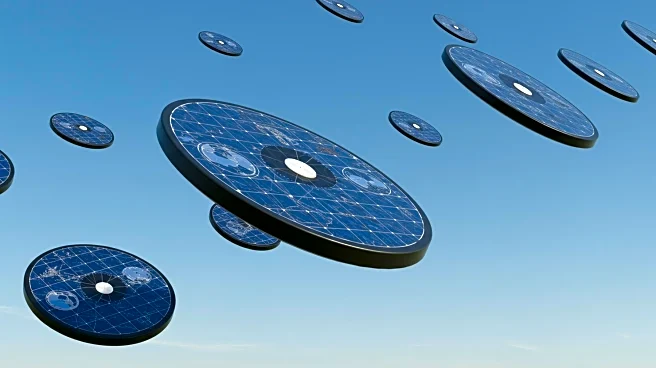What's Happening?
Researchers have developed tiny discs that can levitate in the upper atmosphere using sunlight, a phenomenon known as photophoresis. These discs, made of aluminum oxide sheets, are designed to carry sensors to the mesosphere, a region difficult to study due to its low air pressure. The discs could reach altitudes of 75 kilometers, providing new insights into weather and climate patterns. The technology is being commercialized by Rarefied Technologies, aiming to enhance atmospheric monitoring and telecommunications.
Why It's Important?
The development of solar-powered levitating discs represents a significant advancement in atmospheric research. By enabling sensors to reach the mesosphere, scientists can gather data from a region often referred to as the 'ignorosphere' due to its inaccessibility. This could lead to improved understanding of climate change and weather phenomena, benefiting environmental research and policy-making. The commercialization of this technology may also drive innovation in telecommunications, offering new methods for data transmission.
What's Next?
The next steps involve scaling up the discs to carry larger payloads and conducting further tests to ensure their functionality in real-world conditions. Researchers are exploring the possibility of maintaining the discs' levitation at night by utilizing heat from Earth's surface. This could expand their operational time and enhance data collection capabilities. The success of these developments could attract interest from environmental agencies and telecommunications companies.












